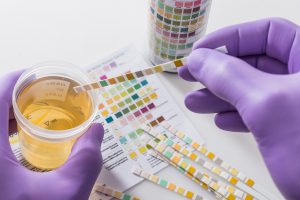 We offer many different types of drug & alcohol screens including Cocaine, Marijuana (THC, cannabinoids), Phencyclidine (PCP – angel dust), Amphetamines (including methamphetamines, MDMA – ecstasy, MDA), Opiates (including heroin, codeine and morphine), Barbiturates, Benzodiazepines, Methadone, Propoxyphene, Oxycodone, Creatinine, EtG, Alcohol and more. These are provided using saliva, urine or hair samples. The types of tests listed below are provided using several drug/test panels.
We offer many different types of drug & alcohol screens including Cocaine, Marijuana (THC, cannabinoids), Phencyclidine (PCP – angel dust), Amphetamines (including methamphetamines, MDMA – ecstasy, MDA), Opiates (including heroin, codeine and morphine), Barbiturates, Benzodiazepines, Methadone, Propoxyphene, Oxycodone, Creatinine, EtG, Alcohol and more. These are provided using saliva, urine or hair samples. The types of tests listed below are provided using several drug/test panels.
Saliva or Oral Fluid tests: These have about a 2 to 12-hour look back period. Because the proportion of alcohol in saliva is directly related to the proportion of alcohol in blood, these screens can easily and quickly detect the presence of alcohol. These tests:
- Noninvasive specimen collection
- Easy to collect
- Usually are Point-of-care tests (POCTs)
- Reduced risk of adulteration, directly observed specimen collection
Urine tests: These have about a 72-hour look back period, although they can detect drug use up to one week prior. This is especially helpful for employers who are concerned an employee might have drugs in their system. Even if they don’t “feel” impaired, they could still technically be under the influence, and thus a risk for the company. Lab-based urine testing is the gold standard and most defensible testing method. It is the best choice for testing in any situation that is not highly time-critical.
- Available in sufficient quantities
- Higher concentrations of parent drugs and/or metabolites than in blood
- Availability of point-of-care tests (POCTs)
- Well-researched testing techniques
EtG tests: Alcoholic beverages contain ethanol, also called ethyl alcohol, which is produced through fermenting sugars using active yeasts. EtG (or Ethyl Glucuronide) is a direct metabolite of alcohol. EtG is only evident when ethanol is ingested and is not produced as a result of fermentation. There are two main ways of testing, hair and urine. EtG is not appropriate for workplace drug testing because it does not detect current impairment during working hours. The presence of EtG in urine is an indicator that ethanol was ingested for up to 80 hours previously. Hair indicates ingestion within the last seven to ninety days and can provide a behavioral indication of excessive use. The detection of EtG in hair is a measure of chronic excessive alcohol consumption. Its uses include:
- Monitoring alcohol abstinence for probation programs
- Court-ordered cases
- Child custody cases
- Drug court cases
- DUI cases
- Other situations where the person is absolutely prohibited from consuming any alcohol
Hair Follicle Tests: The newest trend in drug testing is hair follicle drug testing. Same day service is available for hair testing with a 3 – 5 business day turnaround for final hair drug testing results. Many attorneys are ordering hair follicle drug testing for court ordered drug testing, child custody drug testing and divorce drug testing. Individuals often order hair follicle drug testing for personal reasons and also parents are testing teenage children.
- Hair testing can detect the drugs/metabolites taken up to 90 days.
- Hair testing evaluates long-term patterns of repetitive drug use.
- Every hair follicle test is observed and it is difficult for the testing donor to cheat on the test.
The types of tests listed above are provided using several drug/test panels.
